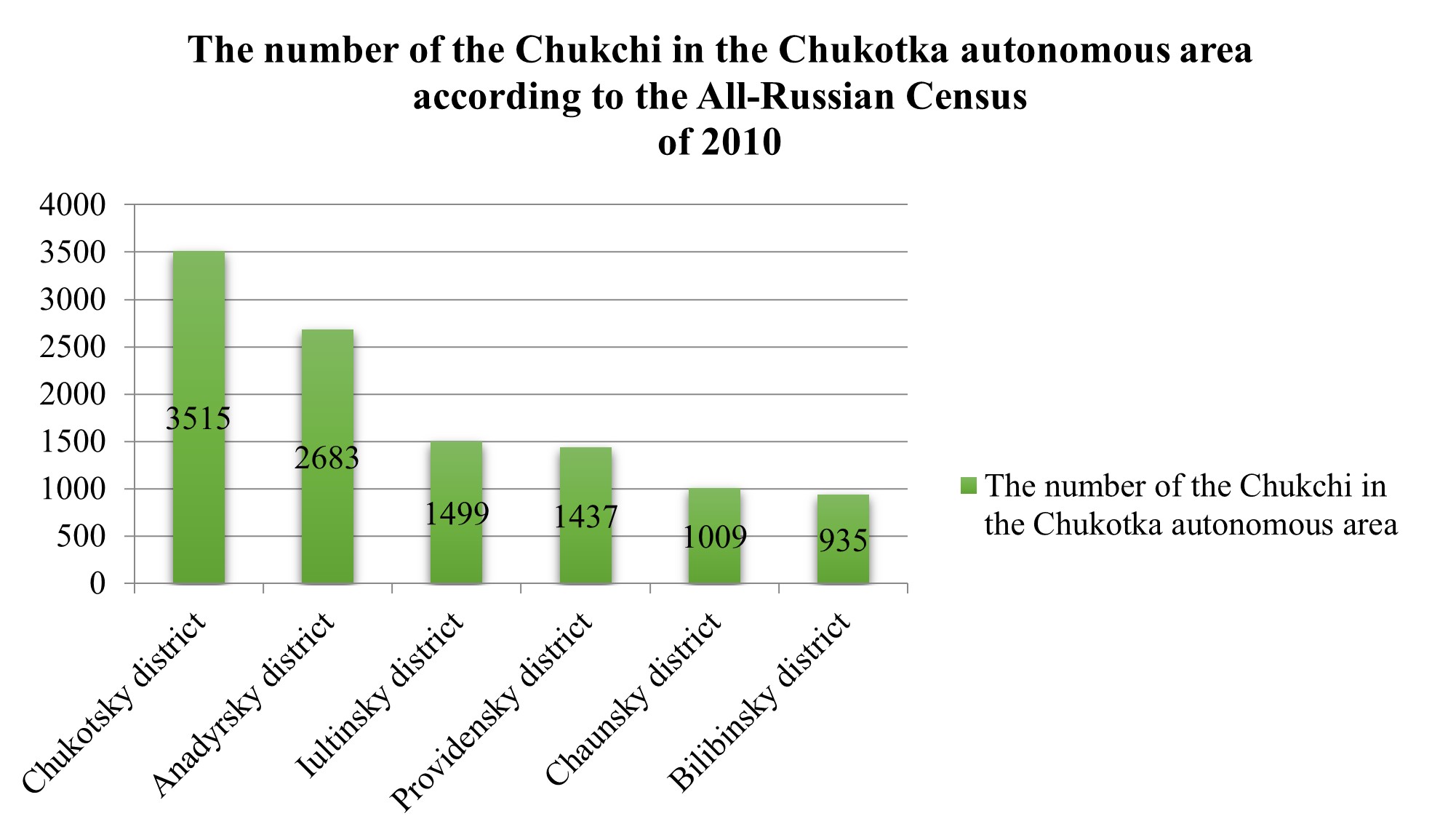Demographics
The total number of Chukchi, according to the 2020 All-Russian Population Census, is 16,228 people (7,641 men and 8,587 women).
Over the last century, the number of the Chukchi gradually increased: in 1959 - 11,680 (9,975 persons, an increase of 21.36%), in 1979 - 13,937 (11,292 persons, 8.07%), in 1989 - 15,107 (11,914 persons, 7.27%), in 2002 - 15,767 (12,622 persons, 23.98%), in 2010 - 15,908 (12,772 persons, 25, 28%).
According to the data for 2010, the number of people living in the territory of the Chukotka autonomous area is: in the Anadyrsky district – 2.683, Bilibinsky - 935 persons, Iultinsky – 1.499, Providensky – 1.437, Chaunsky – 1.009, Chukotsky – 3.515.
Currently, the Chukchi make up approximately 25.3% of the total population of the area. The only district with the absolute Chukchi majority is Chukotka (72.7%).
In the Chukotka autonomous area, there are 3 cities - Anadyr (13,551 people), Bilibino (5.494) and Pevek (4.140) and 5 urban-type settlements (Ugolnye Kopi, Provideniya, Beringovsky, Egvekinot, Mys Shmidta), the population of each not exceeding 4.000.
In 1989–2002, as the census indicated, the ratio of urban and rural residents in Chukotka changed slightly and became 67% (urban residents) and 33% (rural). In 2008–2011, the ratio did not change significantly. As of January 1, 2011, there were 32.663 urban residents and 17.687 rural residents in the area.
In the rural areas, the birth rate (18.4% in 2003 and 17.0% in 2008) is 25.3% higher than in the urban areas (10.2% in 2003, 12.7% in 2009). The mortality rate among the rural population (18.6% in 2009) is 45.2% higher than among the urban population (10.2% in 2009).
Currently (Federal State Statistics Service, 2021) there are 49,527 persons living in the Chukotka area. Population density is 0.07 people/sq.km (2021). The urban population accounts for 72.64% (2020). The Chukchi are distributed evenly throughout the district. The majority of the people live in small villages with a population of 200–1000 people (non-indigenous people reside mainly in Anadyr and large urban-type settlements). In the capital, Anadyr, the indigenous population accounts for about 15%.
.

























































